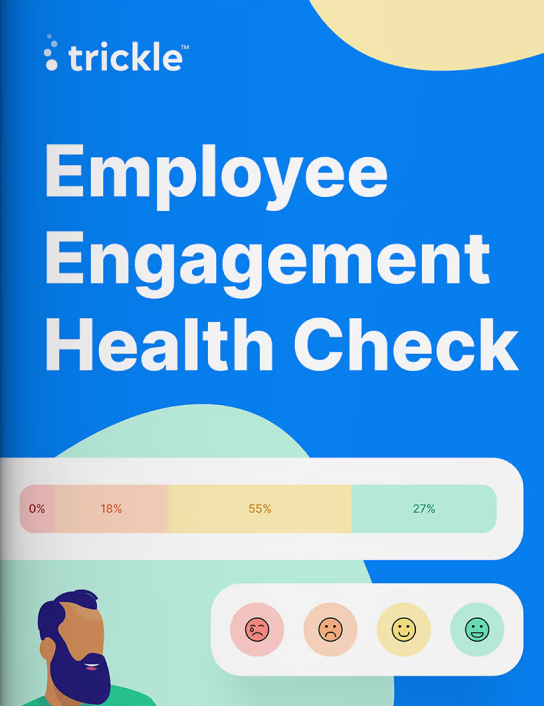How well does your company engage its employees?
Take your health check and find out.


Originally posted – 14th September 2021, adapted 13th July 2023.
A company’s culture is vital to its success, provided it is a healthy culture that fosters inclusiveness, productivity and empathy, among other things.
93% of CEOs say that it’s important that their organisation has a strong corporate purpose that’s reflected in its values, behaviours and culture.
But it isn’t something that only CEOs recognise. In the time of the Great Resignation/Quiet Quitting/Quiet Hiring, almost half of jobseekers (46%) stated that company culture was an important factor when switching roles.
Generally, a company’s culture is often closely linked to the quality of their employees’ experience. The better the culture, the more likely it is that employees will enjoy a better experience at work.
Over time, either out of preference or necessity, culture can change. The trick is to ensure if and when it does happen that the process is as seamless as possible and that the outcome is positive overall.
From our experience, there are four steps a company can take to holistically thrive:
Maintaining the culture of an organisation is an ongoing project – and one that is never finished.
To be able to make significant changes to an existing culture, it must be maintained in the first place.
But the process of maintaining culture as well as building it isn’t linear. There will be tweaks that need to be made along the way. There will be times when you feel that things aren’t going as well as they should be, times when you need to go backward or sideways to move forwards. That’s a normal part of culture building and maintenance.
There needs to be a culture (yes, we know the irony) of open and honest feedback for any culture to be implemented and survive. This is arguably at the core of everything employers do. Your employees are just as important as customers. After all, the best improvement suggestions often come from the people on the front line.
Those in charge set the tone (with employee input) of the company, so they must be trusted by the people they manage. In this case, think of a captain – or captains – and a ship. The staff on the ship need to trust that the captains are going in the right direction. Otherwise, the journey will be unpleasant – less ‘are we there yet?’ and more ‘do you know where we’re going?’
When it comes to culture, the C Suite staff must put their egos aside and focus on the greater good of the company.
Proactive or reactive – which is better? When maintaining a culture, the answer is both.
To maintain the correct course of action, you’re being proactive (looking at the radar for obstacles up ahead and around you) and reactive (steering to avoid a rogue wave that appears out of nowhere).
Those at the forefront of maintaining the organisational culture must deal with day-to-day things such as:
As well as more strategic, longer-term elements like:
It’s no longer good enough to have a ‘culture of innovation’ or ‘curiosity’. This isn’t because they are bad statements; quite the opposite, we think they’re great. The problem is that they’re ambiguous.
It’s likely that if you asked 100 people what a ‘culture of innovation’ was, you’d receive at least 50 different answers. Clearly defining what the culture is – in the form of observable behaviour – is vital. Everyone needs to be in firm agreement about what’s required of them and their colleagues.
Culture building and maintenance is a tough task with so many moving parts. Ensuring employees are consulted, tracking their feedback, implementing that feedback into the culture, all whilst trying to turn a profit – it’s tricky. However, that’s where Trickle comes in. Some of the things our platform can help you with include: